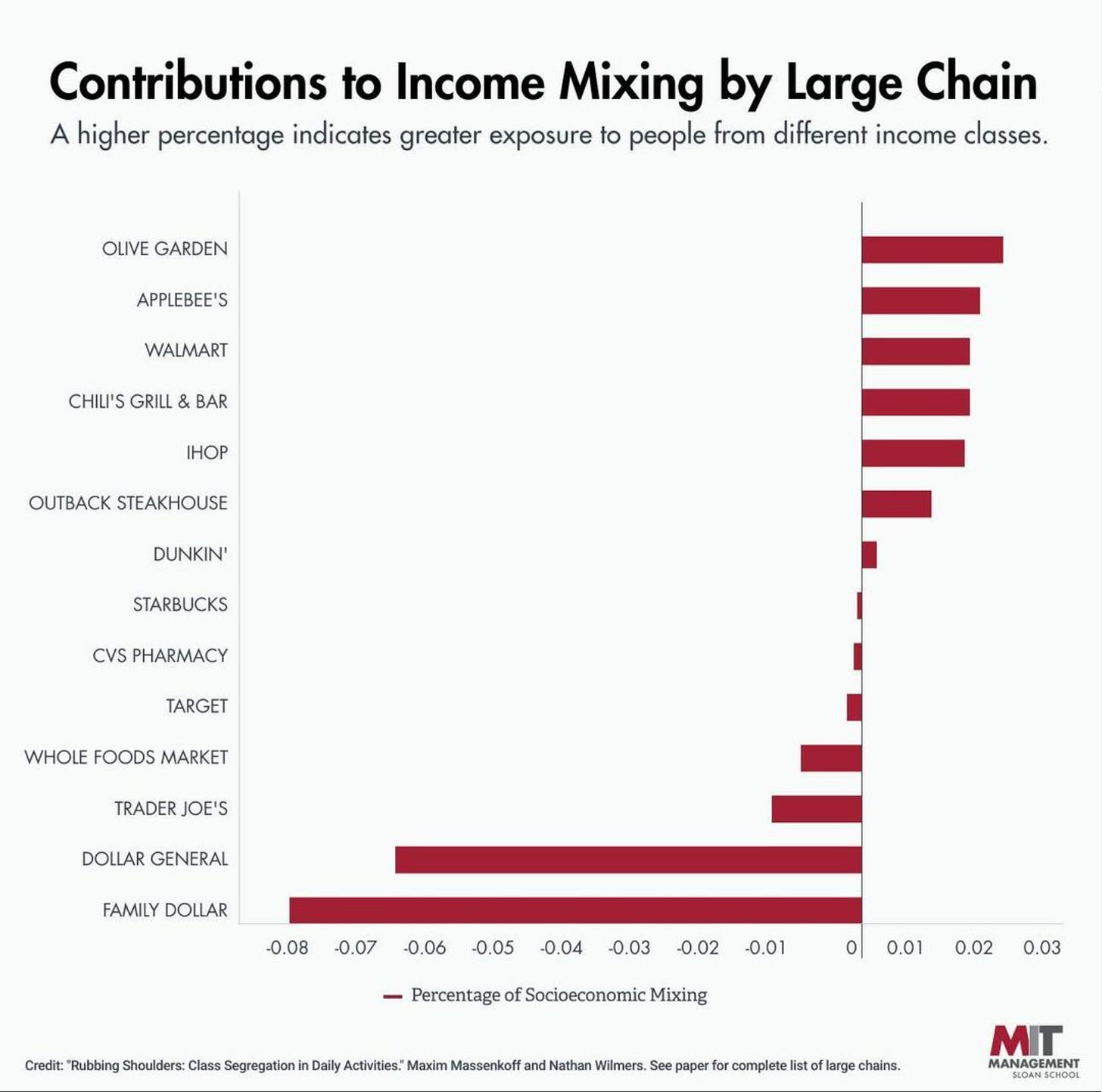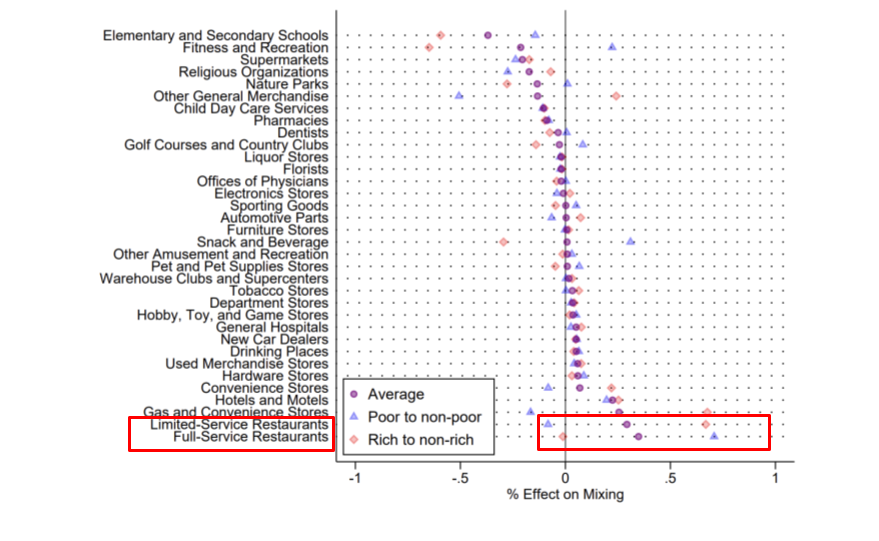Mixing It Up
Breadsticks, Bourbon Street Steak...and Class Integration
To elide something is to leave out, omit or disregard it. This newsletter is, in part, an effort to discuss the role of restaurants in society and culture in a way that is too often elided. The idea is that with a deeper understanding of how restaurants exist in the 21st century, we can better maximize their potential to do good. Elide also has my name in it, which is helpful.
A recent paper by Maxim Massenkoff (Naval Post Graduate School) and Nathan Wilmers (MIT Sloan) illustrates how restaurants, at least certain kinds of them, create integration between economic classes. The research shows that restaurants, more than any other industry, foster socioeconomic mixing.
The paper presents a comprehensive study on the patterns of class segregation in various daily activities. The authors use location data to analyze encounters across different income groups, focusing on how low-income and high-income individuals tend to be socially isolated, often encountering people from their own social class. One of the biggest takeaways from the paper:
“Indeed, the most socioeconomically diverse places in America are not public institutions, like schools and parks, but affordable chain restaurants.”
Of the 7 brands listed above that are on the positive side of enhancing economic class mixing, 6 of them are restaurant/food brands. The paper specifically calls out chains like Olive Garden and Applebees as effective at facilitating class mixing for a few key reasons:
Diverse Clientele: These restaurants tend to attract a wide range of customers from various income groups. Unlike niche or high-end restaurants, which may cater to a more specific socioeconomic class, casual dining chains offer a menu and atmosphere that appeals to a broad segment of the population.
Scale and Accessibility: The large scale of these chains, with numerous locations across different regions, makes them accessible to a larger and more diverse group of people. Their widespread presence means that individuals from different socioeconomic backgrounds are more likely to have access to these dining options in their vicinity.
Affordability: Casual dining chains are generally more affordable compared to upscale dining options. This affordability makes them accessible to a broader spectrum of the population, encouraging people from different income levels to dine in the same space.
The graphic below from the paper shows that limited and full service restaurants have the highest impact on socioeconomic class mixing of any industry. It’s unfortunate that our educational system is at the opposite end of the spectrum but we’ll leave that for someone else to explore.
The class mixing in chain restaurants is turbocharged by their ubiquity, but affordability and accessibility are not unique to Darden & Dine Brands. Anecdotally, our restaurants with average entrees in the teens see a mix of students, construction workers, venture capitalists, public transit workers, and the occasional Nobel Prize Winner. While the solution to class segregation isn't as simple as proliferating more affordable and accessible restaurants, they can play a vital role. The paper references the work of sociologist Scott Feld who observed that ‘social ties tend to form around shared activities or focal points that provide a context for interactions and relationships to develop’. I take this to mean that you gotta start somewhere, that a context for interaction is better than no context for interaction.



